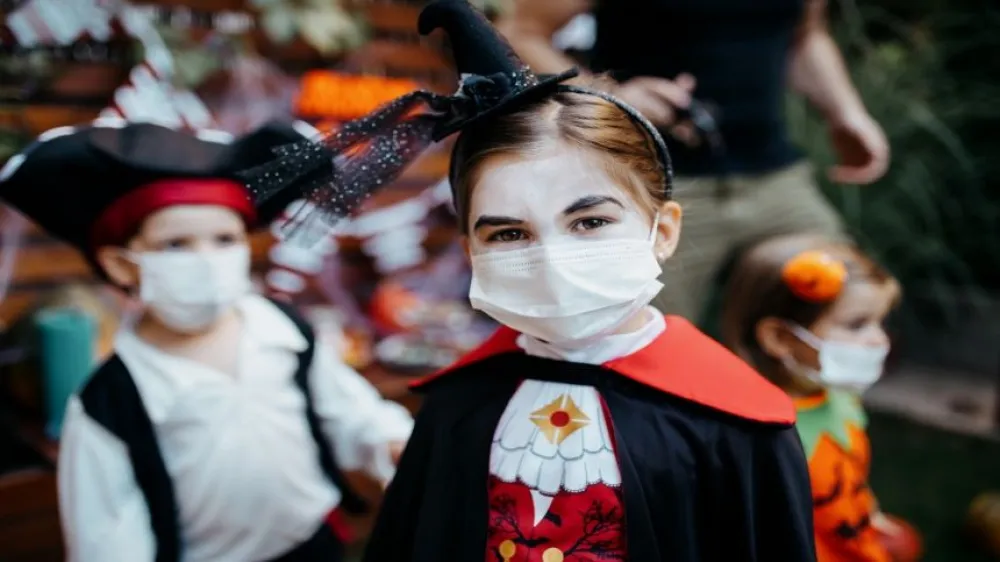Providing your location allows us to show you nearby locations and doctors.
Halloween safety for your trick-or-treaters

10/18/2022
Halloween is one of the most enjoyable kid holidays of the year. Children dress as someone or something else, knock on the door of strangers and are rewarded with a bowl filled with the best candy.
To ensure you and your child have the most enjoyable evening, family medicine physician, Dr. Cornelius Ferreira — chair of primary care for Nuvance Health Medical Practice — shared these tips:
COVID-19 precautions
- Avoid direct contact with trick-or-treaters.
- Give out treats outdoors, if possible.
- Set out individually bagged treats for kids to take.
- Wash hands before handling treats.
- Wear a mask.
Costumes don'ts
- Is your child's costume a safety risk? Does it fit correctly? Is it too long?
- Is there a mask or accessory that blocks your child's eyes? Can you use makeup vs. a mask? Is the makeup nontoxic?
- Vampires, bats, ghouls and witches are popular costumes, but dark fabrics can pose a safety risk. If your child's costume isn't light and bright, add some reflective strips or stickers to the fabric so cars can see them at night. You can also use a white pillowcase as a trick-or-treat bag to help them be more visible.
Trick-or-treating safely
- A flashlight is a good idea, too. Not only will it help cars see children, it will help them see curbs, sidewalks and sticks.
- Don't trick-or-treat alone. Young children should be supervised by a parent. Older children should go out in groups and have a curfew.
- A tick check following trick-or-treating is a good idea, especially if your child walked through leaves, brush or tall grass.
- Remind children never to go inside a house or business and to only trick-or-treat in familiar neighborhoods and at homes with lights on.
- Children should be warned about strange pets or animals. They might bite.
- Remind your children about road safety, including looking both ways before crossing a street, crossing in crosswalks, waiting for walk signals, etc. Review these rules a few days ahead.
Candy safety
- Check your children's candy before they eat any. Toss any homemade or unwrapped items.
- Watch out for choking risks such as small toys or hard candy (for smaller children).
- Limit candy. Ten candy corns have about 16 grams of sugar and one Reese's peanut butter cup is 110 calories. The American Heart Association recommends children ages 2 to 18 should have less than 25 grams of sugar a day.
- Candy leftovers can be frozen and added to ice cream sundaes, milkshakes and brownies throughout the year. Chocolate bars can be melted down and used in holiday baking months later. Or, donate candy to a good cause, such as Treats for Troops.
- Always read candy labels if your child has allergies. You can't be too cautious.
Dr. Cornelius Ferreira is the primary care system chair at Nuvance Health Medical Practice and practices family medicine in Brookfield, Conn. You can search for a pediatric or family medicine provider near you here or learn more about primary care here.
